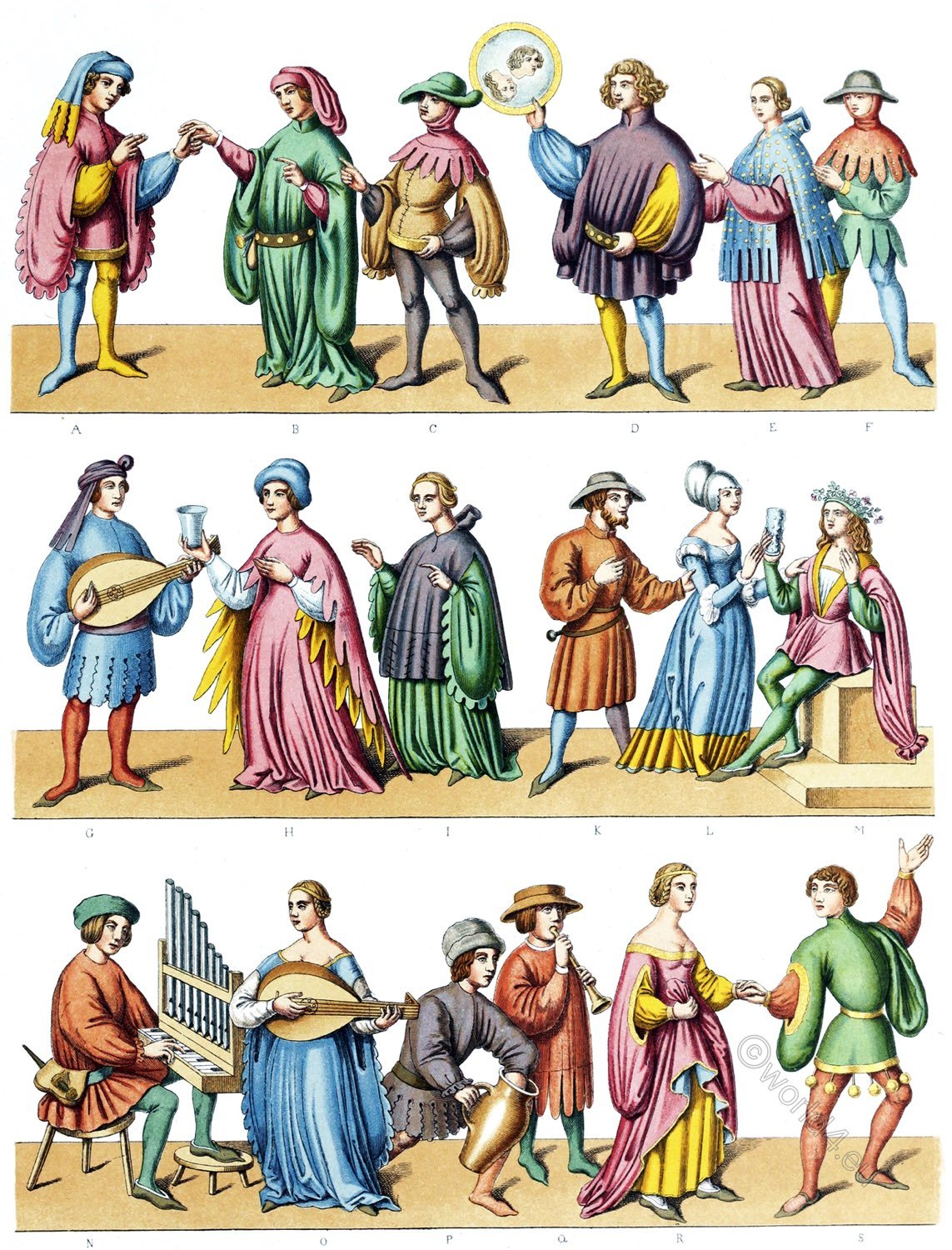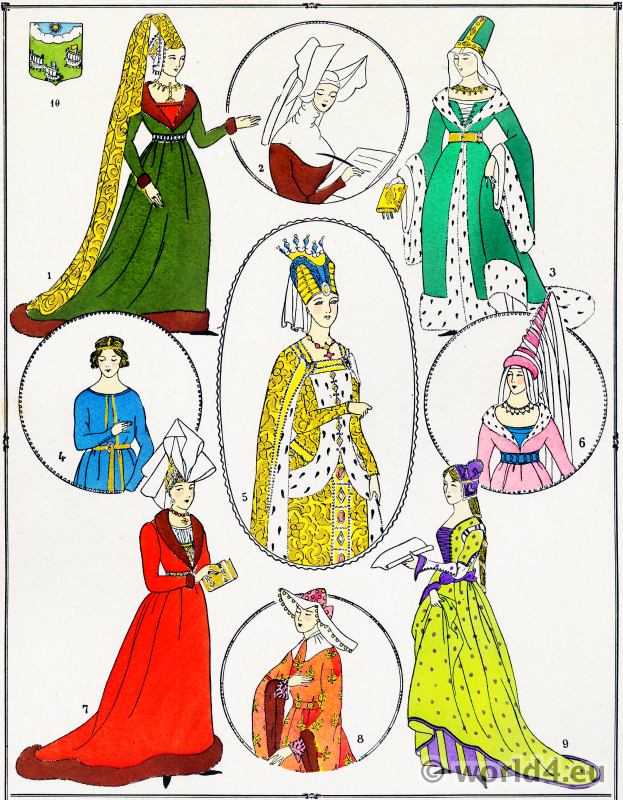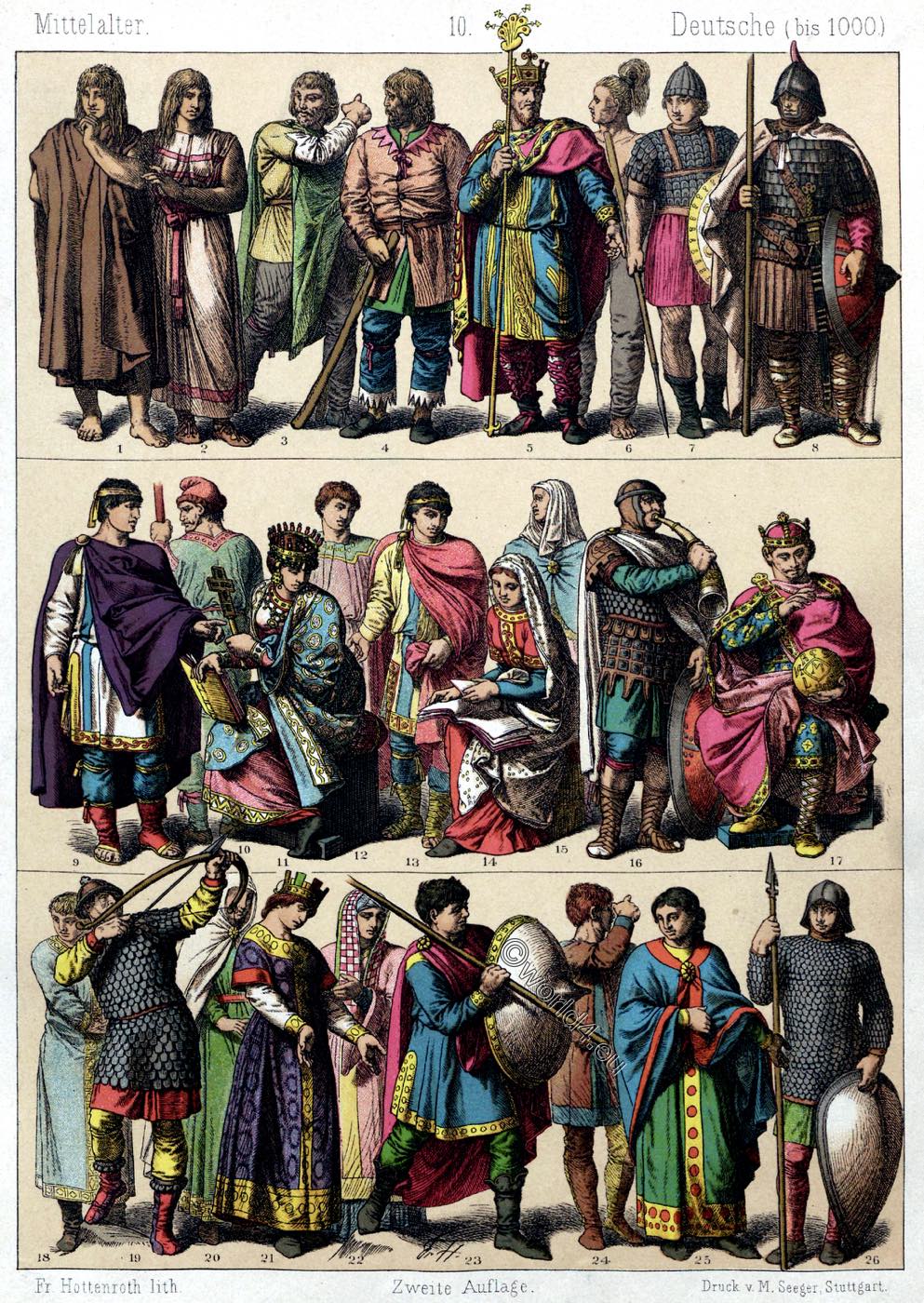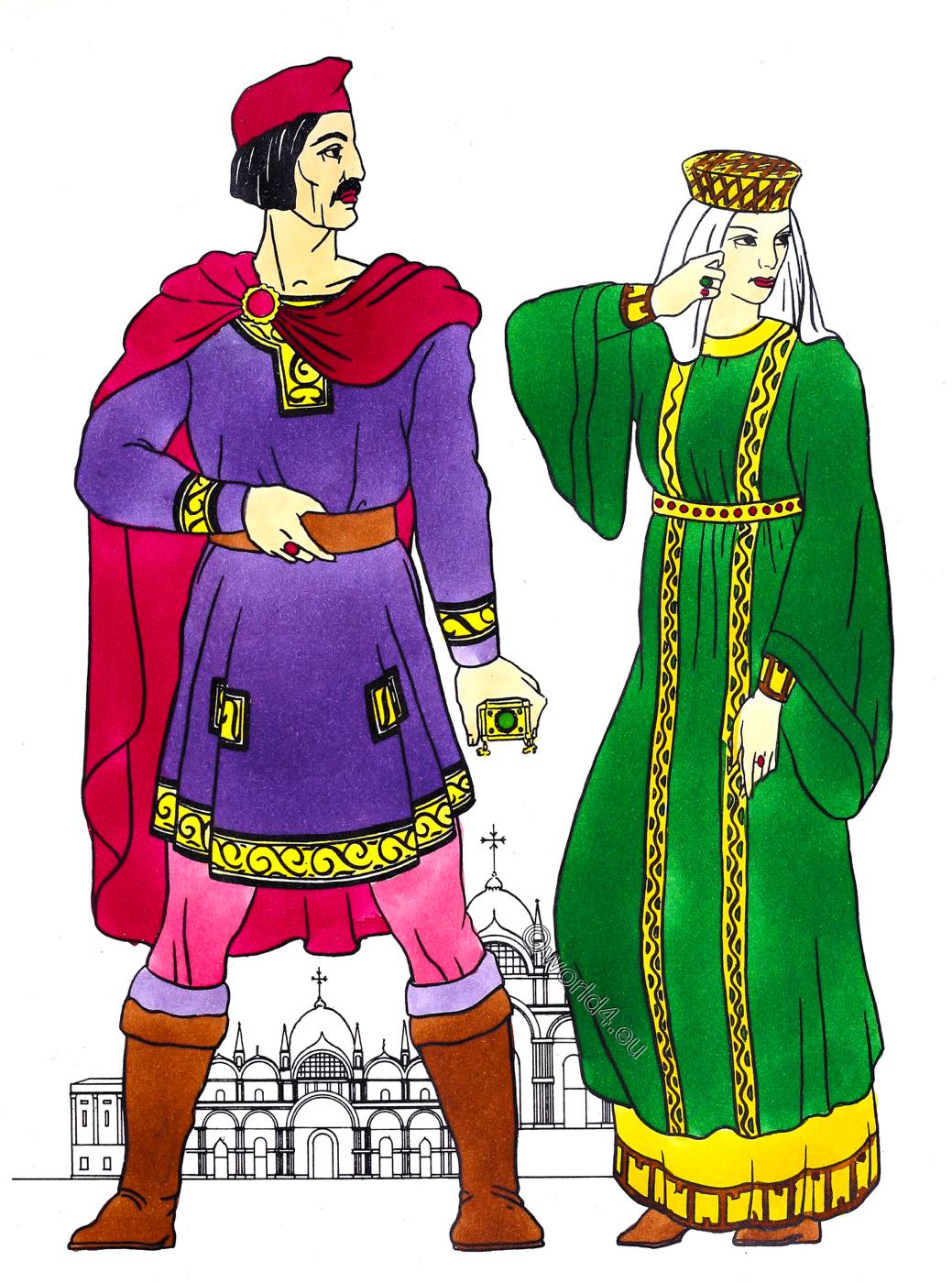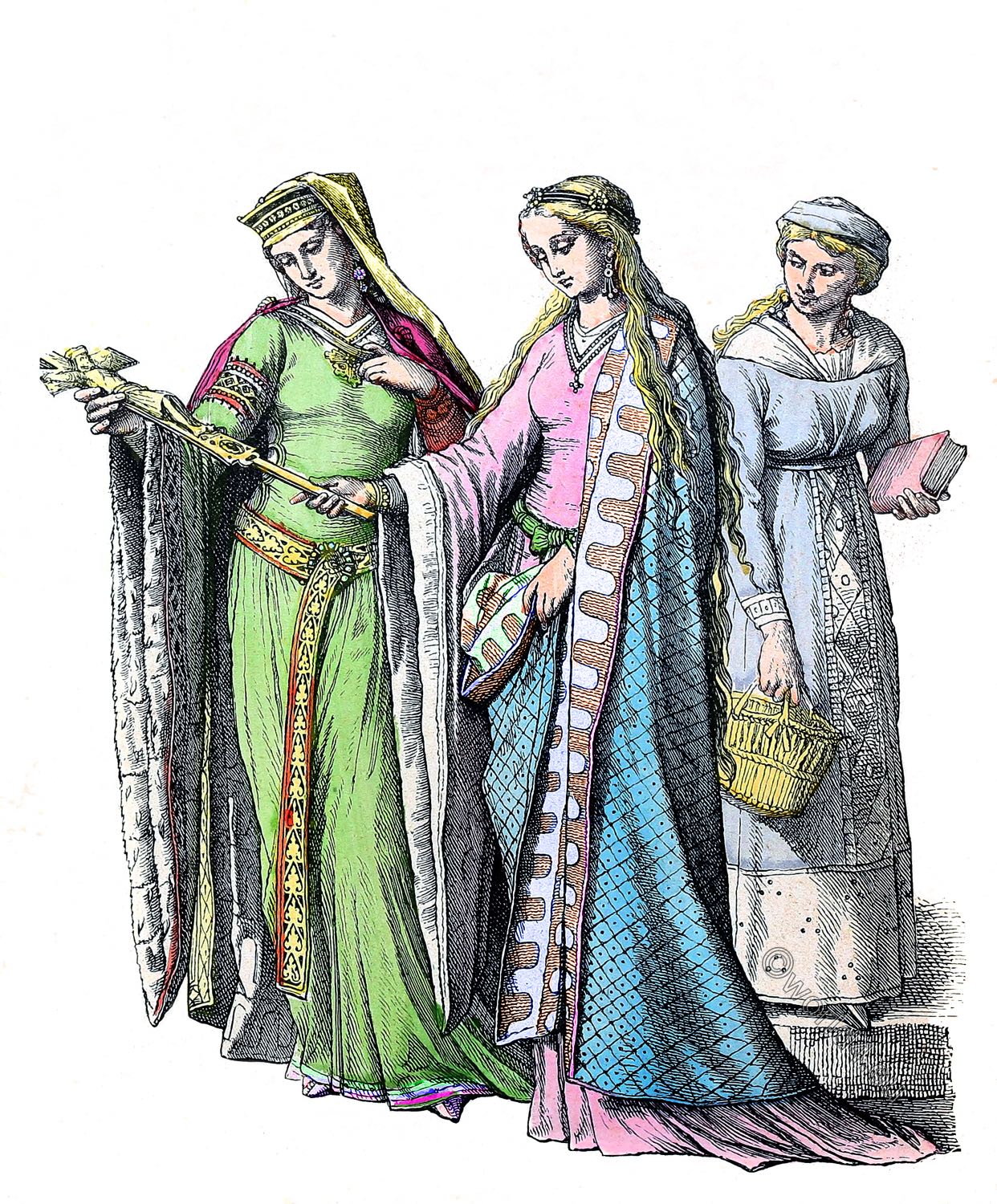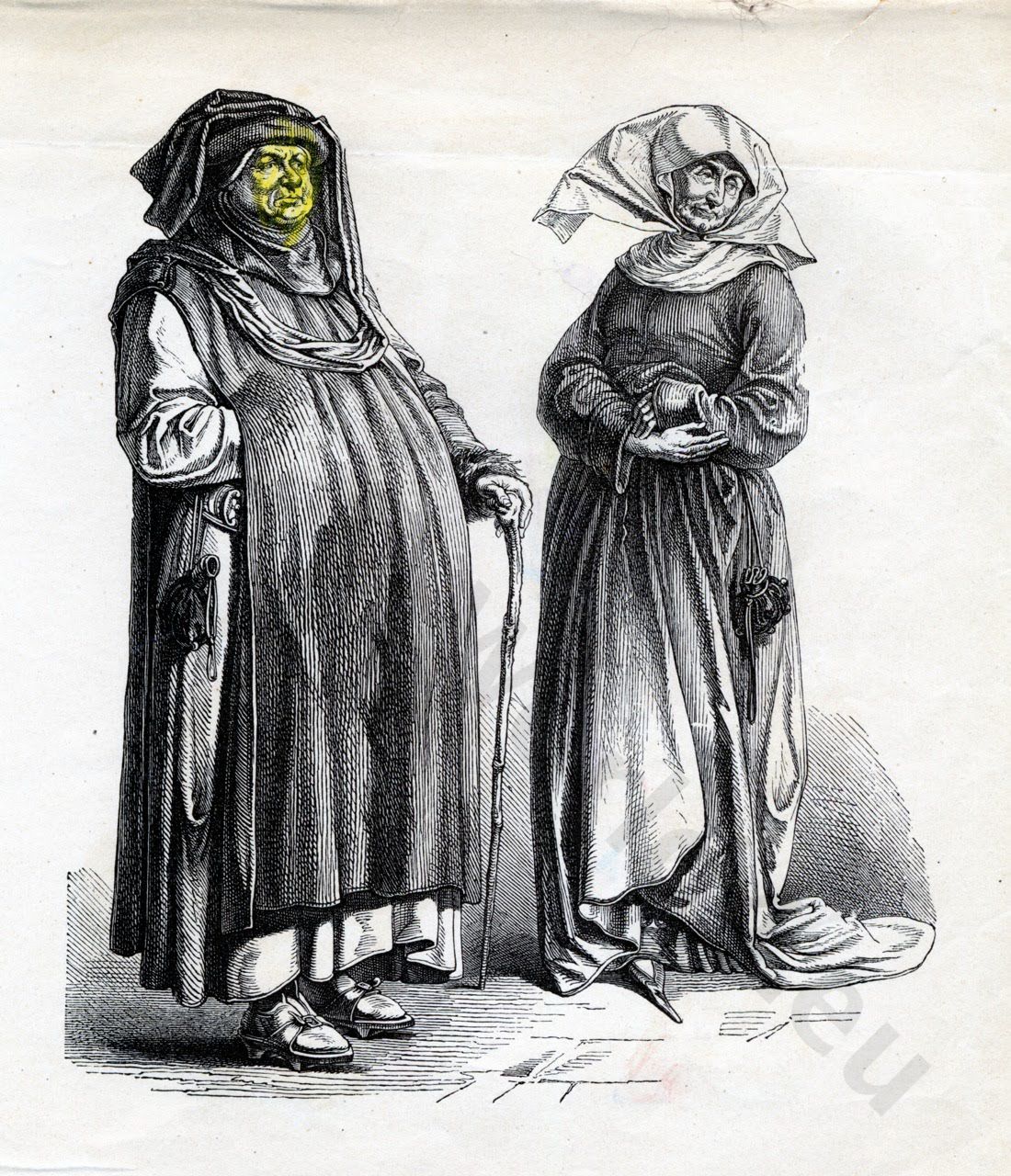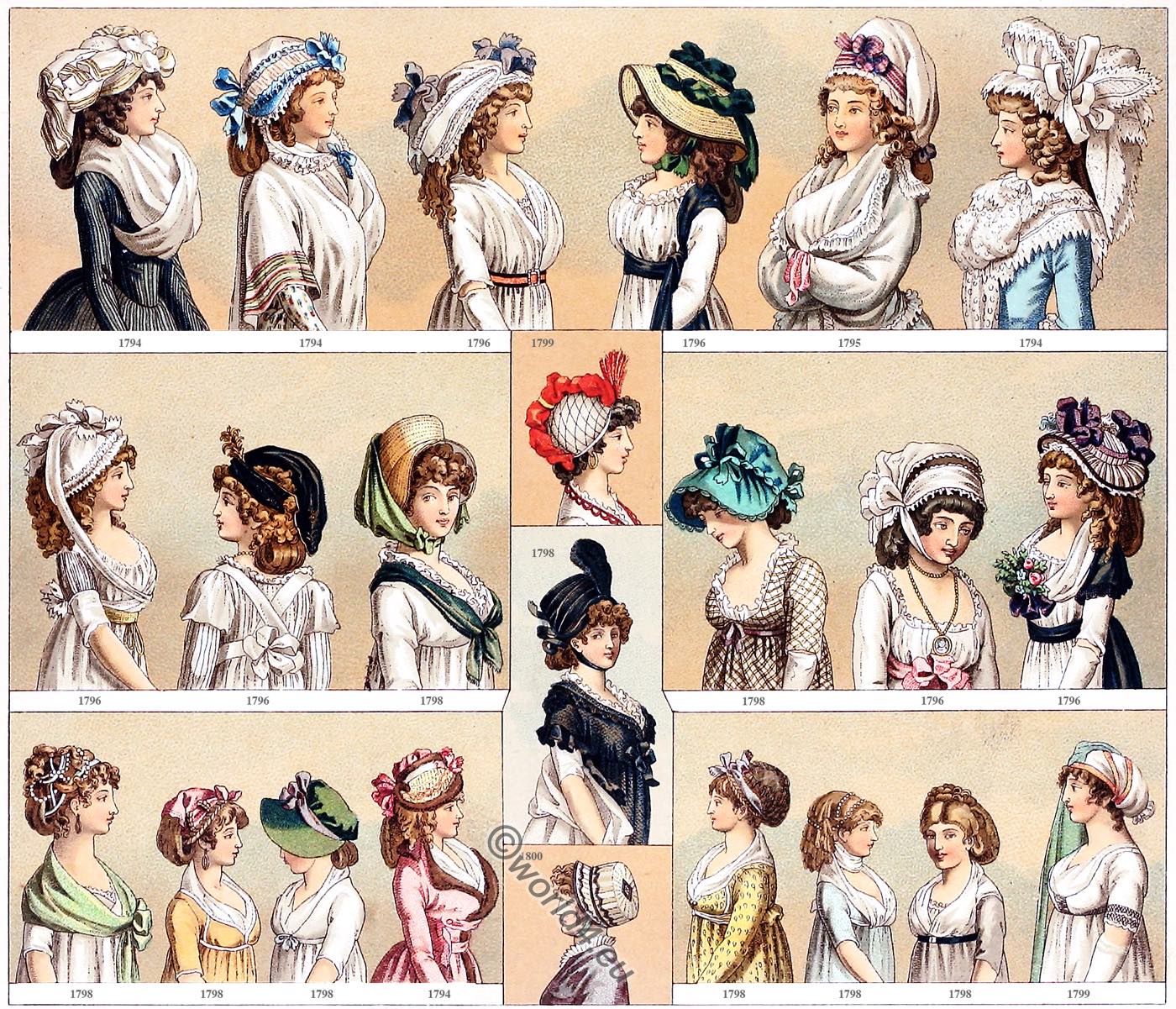The Fashion of Mi-parti. Costumes from the middle of the 15th century.
by Hefner-Alteneck.
Plate 272.
Costumes from the middle of the 15th century after pen and ink drawings of a parchment codex of that period in the Grand Ducal Library at Weimar.
These represent various sciences and arts, such as medicine, physics, music, dance, sleight of hand and so on. We chose individual groups from them for our purpose and determined the colours of the same according to an old manuscript with almost identical but coloured figures.
The mi-parti, the wide bag sleeves, like the long jagged or cogged surplices are repeated here in the most varied applications and changes.
Under B you can see a doctor in a long cap with wide sleeves. Even if the form of the costume changed, the doctor still appeared for a long time as here, in green robes and red headdress.
In the richly dressed young men A, C & S, the knightly belt, which by this time had already lost the essence of its meaning, appears here preferably only as an adornment.
Mi-Parti (French for “half piece”, “tvedelt”, “medium” or “plump”) is a type of colour pattern with a vertical distribution used in heraldry and as a fashion in European medieval clothing. Mi-Parti was particularly widespread in the Gothic period of the 13th century. In Mi-Parti fashion, garments were divided into two along a vertical centre line front and back. The halves were given contrasting colours or each of their divergent patterns, such as large rows or wide stripes.
In more complicated cases, not only the suit itself but also its separate parts were divided into different colours: Sleeves, trousers, shoes, etc. Mi-parti also appeared on dresses, robes and other garments.
Mi-Parti became the “Byzantine fashion” of the German Middle Ages in the 11th century, after the marriage of the German Emperor Otto II and the Byzantine Princess Theophanu on 14th April 972. It was a further development of the colourful Byzantine fashion that had already influenced the whole of Europe and was widespread during the late Middle Ages until the Renaissance in the 16th century.
Characteristic of this period was that clothing became increasingly tight and colourful. This gave rise to the mi parti, which made it possible to combine a large number of colours. The combination of colours was marked by prestige, because dyes were expensive and the bourgeoisie usually wore brown clothes.
Source: Costumes, works of art and utensils from the early Middle Ages to the end of the eighteenth century, after contemporaneous originals by Dr. J. H. von Hefner-Alteneck. Published by Heinrich Keller. Frankfort a. M. 1879-1889.


